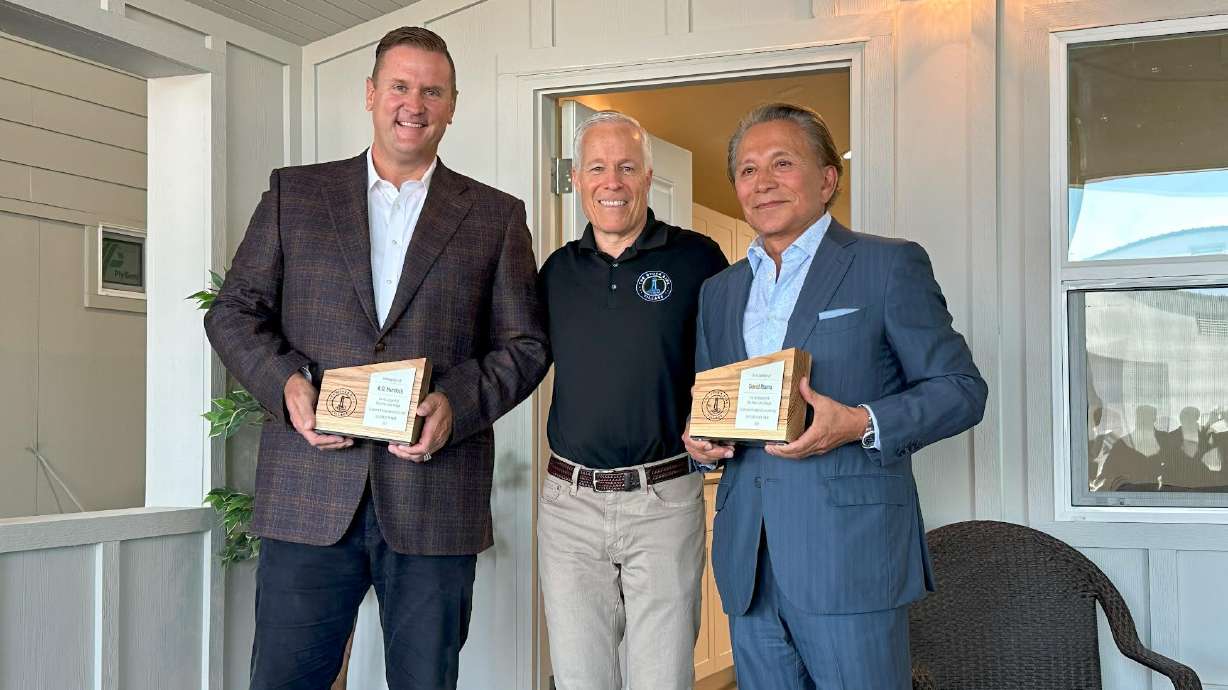Estimated read time: 4-5 minutes
This archived news story is available only for your personal, non-commercial use. Information in the story may be outdated or superseded by additional information. Reading or replaying the story in its archived form does not constitute a republication of the story.
SALT LAKE CITY — The building blocks of the Other Side Village, the state's first tiny-home community for the chronically homeless, are spread across warehouses and parking lots.
The master-planned neighborhood will house 430 tiny, affordable homes as permanent housing for people who are chronically homeless. The first phase of the project will consist of an initial 60 homes on the 38-acre lot at 1850 W. Indiana Avenue. Half of those tiny homes have already been built, but the Other Side Village is seeking to complete the remaining 30 homes with help from the community.
"This is a moment in history. It's history for some people, in particular, who will be the first to live in the village — and not just live in the village but create it, create the community, create the way people come together and help change each other's lives," said Joseph Grenny, co-founder of the Other Side Village. "And this moment, and this potential for the folks that are pioneering in creating the Other Side Village, would not have happened without people who are early believers in the model."
The last 30 tiny homes to be built can be sponsored by members of the community, with the approximate cost to build and fully furnish a home being around $90,000. Two sponsored homes were presented to the community in a press conference Wednesday, with business leaders David Ibarra and the Murdock family naming them. Ibarra unveiled "Live Ready Casa" and Tyson Murdock unveiled "Silverado Manor" on behalf of his family.
"The names are meaningful to us in our lives, and we hope they will be meaningful for the villagers who will call them home in the coming months," said Murdock, managing partner of Murdock Automotive Group.
The Other Side Village will require residents to pay rent and will provide access to on-site social services and employment opportunities. The village will also include amenities for residents such as a grocery store and community events center, as well as retail and other social enterprise facilities. Residents of the Other Side Village will attend a prep school before transitioning into their new, permanent home.
"The population that we want to help is often folks that have lived for years on the streets and, like any human being, what you have been doing for years becomes your lifestyle. And so, learning to manage life differently than you have for the last few years, and sometimes even decades, is the real central challenge of changing lives," explained Grenny.
The prep school will focus on teaching life skills such as managing money, conflict resolution with other residents, cooking nutritious food and managing physical and mental health. The prep school will also serve as an opportunity for residents who may relapse while living in the village to manage and access help before rejoining the village.
"Every single human life matters. And we all get lost, but it's finding our way back to a positive state of mind, resetting our subconscious to be a contributor to society. And Joseph Grenny and the Other Side Academy do just that," said Ibarra.
To Scott Schulte, an Other Side Village resident-to-be, the tiny homes represent his continued progress. A former sports reporter and a New York Times bestselling author found himself homeless after struggling with addiction after a knee replacement.
"I was struggling with the addiction while I wrote the book ... and then when the book was done I had some decent money coming," said Schulte. "And the addiction took over. People tried so hard to help me, but I wasn't in a position — like, I couldn't even put my right foot in front of the other."
Schulte was homeless for a year, living in the Gail Miller Resource Center, when he was connected with the Other Side Academy and selected as a villager.
"One thing I learned is homelessness, drug addiction problems and hurting people that you love — there's no, like, checkbox. It can be the rich, the poor, the educated — I've got my degree and all that stuff. Drug addiction, it doesn't care. I cannot say, without the village, where I'd be right now. I don't even like to go down that rabbit hole," said Schulte.
While Schulte had been a homeowner at another point in his life, he speaks of the tiny homes with a sort of awe.
"You walk in there and you begin to envision, you have this sort of little vision like 'this might be my place,'" said Schulte. "But you see them completed and it's overwhelming, I don't even know how to put it into words. To even qualify for a home, no drug addiction ... you're back living the good life."









